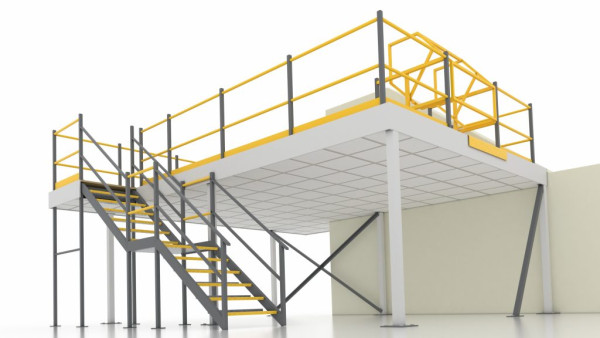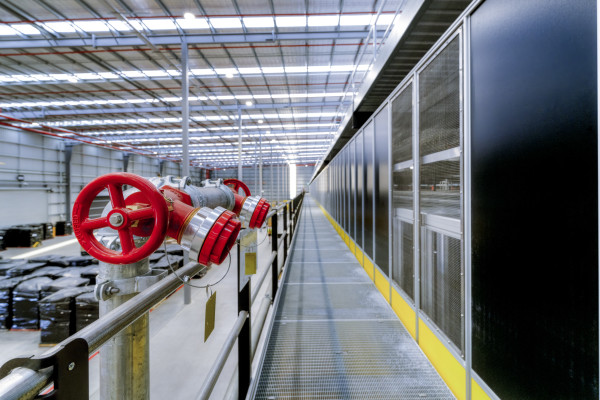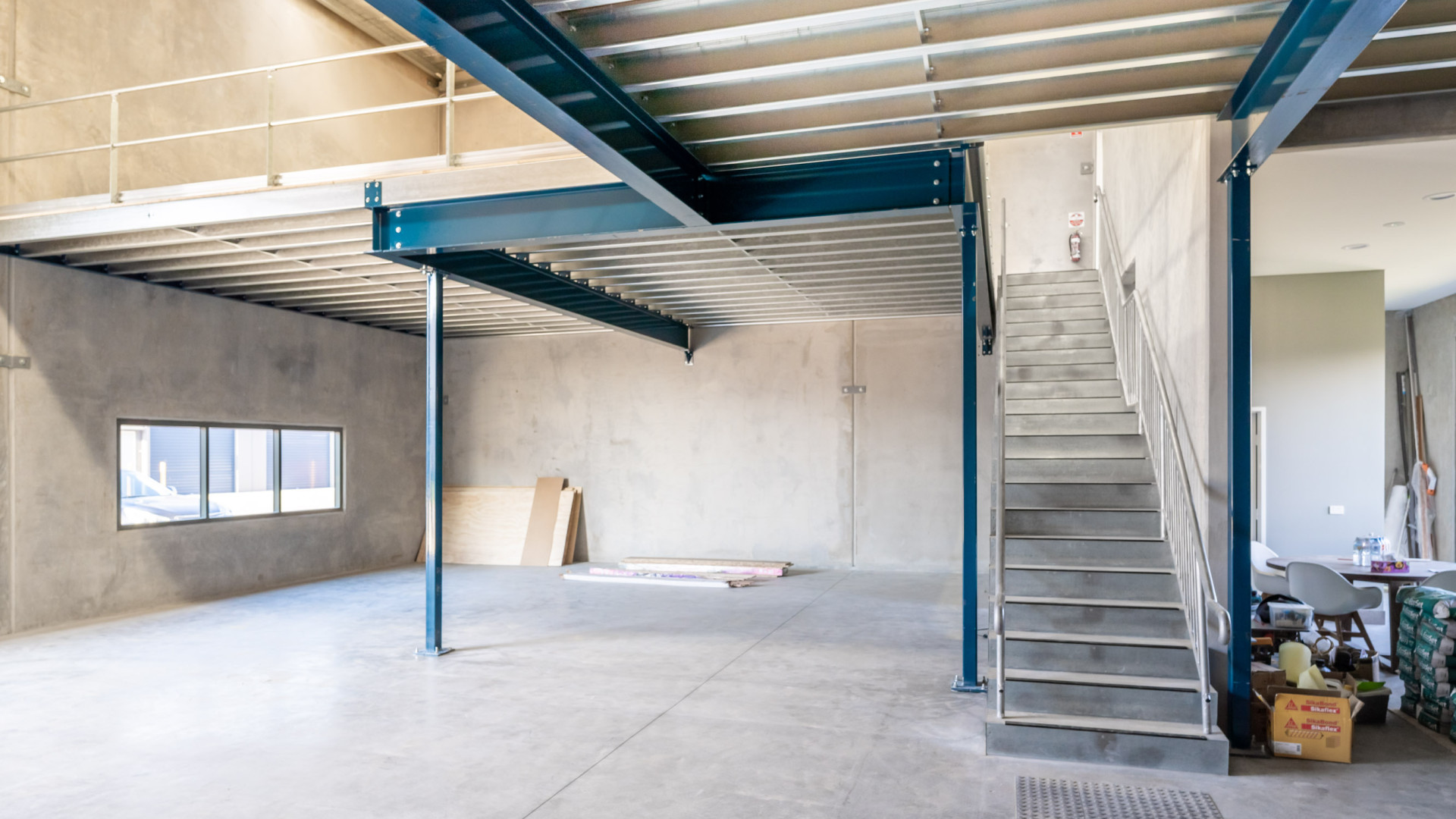Mezzanine flooring is a highly effective way to tap into vertical space within warehouses and industrial facilities. By creating an intermediate floor between the ground level and the ceiling, businesses can increase storage capacity, optimise workflow, and streamline operations. However, mezzanine solutions must be built and maintained to the highest safety standards to protect personnel, equipment and valuable inventory. In Australia, strict regulations govern mezzanine flooring compliance, so it is crucial for warehouse managers, facility operators, and safety officers to understand these requirements thoroughly.
This article will guide you through the key considerations for ensuring your mezzanine flooring meets industry standards. We will explore relevant Australian building codes, discuss fire resistance measures, and outline worker safety strategies. By the end, you will have a comprehensive overview of how to achieve compliance and maintain a safe, efficient workspace.
Understanding Australian regulatory standards for mezzanine floors
In Australia, mezzanine floors fall under several regulations and guidelines designed to maintain structural integrity, reduce fire risks, and ensure safe access for all people, including those with disabilities. Key references include:
-
AS 1657:2018 (Fixed platforms, walkways, stairways, and ladders): Often referred to as the AS 1657 mezzanine guidelines, this standard outlines specifications for safe design and construction of access solutions typically in a warehouse environment.
-
National Construction Code (NCC): Sometimes, referred to as BCA these regulations establish baseline requirements for important safety and accessibility considerations, such as ensuring handrail openings are not large enough for infants or children to fall through, providing wheelchair access, and accounting for the needs of all users accessing the mezzanine. Compliance with the NCC is essential for both safety and certification.
-
Workplace Health and Safety (WHS) regulations: These cover employer responsibilities for hazard mitigation, risk assessment, and ongoing maintenance.
-
AS1428 Design for Access and Mobility: This Australian Standard sets out the minimum design requirements for access and mobility to ensure people with disabilities can safely and independently use buildings and facilities. It includes specifications for wheelchair access, ramp gradients, handrail configurations, door clearances, tactile indicators, and circulation space—ensuring your mezzanine design is inclusive and compliant with disability access legislation.

Load-bearing capacity and structural integrity
One of the first steps in achieving mezzanine floor system compliance Australia is confirming that your mezzanine can support the loads it will carry. Determining mezzanine weight capacity regulations involves conducting a thorough analysis of anticipated usage, whether it be for light storage, heavy-duty shelving or equipment placement. Key factors include:
-
Operational needs: Evaluate the type of goods to be stored and the weight distribution.
-
Reinforcement: Select appropriate materials for beams, supports, and decking to ensure load-bearing mezzanine flooring remains structurally sound.
-
Assessment methods: Engage a qualified engineer or certified professional to carry out structural calculations in line with AS 1657 mezzanine guidelines.
To maintain structural integrity, distribute loads evenly, and avoid overloading certain areas. Regular inspections help catch early signs of stress or damage, enabling timely repairs and ensuring consistent adherence to regulations.

Fire resistance and emergency exits
Fire safety is a critical aspect of warehouse mezzanine safety standards. Mezzanines introduce additional layers within a building, which can complicate evacuation and fire suppression efforts. Therefore, you must adhere to strict mezzanine fire resistance requirements under the National Construction Code. Fire safety considerations include:
-
Fire-rated materials and coatings: Incorporate suitable materials that can withstand high temperatures and reduce fire spread.
-
Sprinkler systems: Integrate sprinkler and suppression systems within the mezzanine structure to meet mezzanine fire safety regulations.
-
Smoke detection and ventilation: Ensure the area is equipped with smoke alarms and adequate ventilation to clear smoke rapidly.
Moreover, safe egress planning is vital. The NCC requires visible and easily accessible emergency exits, including stairways that support quick evacuation. Make sure corridors, landings and exit points are unobstructed and appropriately lit.

Worker Safety: Handrails, guardrails and access points
Protecting workers on elevated platforms is paramount. Under AS 1657 mezzanine guidelines, mezzanine edges, staircases and access points must have proper safeguards such as handrails, guardrails, and balustrades. These features prevent falls and ensure mezzanine workplace safety. Consider the following:
-
Handrails and guardrails: Install at the correct height to protect individuals from unguarded edges without impeding movement.
-
Staircase safety: Steps should have consistent rise and run, adequate tread depth, and a gentle slope. Anti-slip finishes are also recommended for extra traction along with stair nosings.
-
Access ladders: If ladders are used, they must be secure and designed for ergonomic safety. Climbing angles and rung spacing should comply with AS 1657.
Proper signage and markings further support worker awareness. Clear, well-maintained signage around the mezzanine alerts personnel to potential hazards, emphasising safe operating procedures.

Workplace Health and Safety (WHS) compliance
All employers have a duty of care to maintain a safe environment for their workforce. With industrial mezzanine floors, this responsibility extends to managing the risks associated with elevated platforms. Under Australian WHS regulations, you should:
-
Identify hazards: Conduct a risk assessment specific to your mezzanine, considering possible fall risks, slipping hazards, or structural deficiencies.
-
Implement controls: Introduce measures like guardrails, safety nets, and personal protective equipment (PPE) when necessary.
-
Perform regular inspections: Schedule periodic checks to verify that handrails, decking, and support beams remain in good condition.
-
Offer training: Ensure employees understand correct usage, including safe lifting, proper handling of materials, and emergency procedures.
By prioritising mezzanine workplace safety, you not only comply with the law but also foster a positive safety culture. This proactive approach reduces incidents and associated downtime, promoting trust among staff and stakeholders.

Best practices for ensuring compliance
Achieving and maintaining mezzanine flooring compliance Australia is a continuous process. Along with meeting Australian building codes for mezzanines, you should incorporate best practices from industry experts and proven safety strategies.
Consider the following step-by-step approach:
-
Initial consultation: Engage a reputable firm like Unistor or other certified specialists to assess your site needs and recommend compliant solutions.
-
Design and engineering: Work with structural engineers to finalise load capacities, structural supports, and material specifications.
-
Regulatory approvals: Obtain any necessary permits, ensuring your mezzanine design meets AS 1657 mezzanine guidelines and NCC requirements.
-
Professional installation: Hire trained professionals to construct your mezzanine following best practices, including correct fastener usage and alignment.
-
Inspection and certification: Schedule a post-installation inspection to confirm everything aligns with warehouse mezzanine safety standards. Obtain compliance documentation for future reference.
-
Ongoing maintenance: Perform regular checks of floors, handrails, fire safety equipment, and emergency exits. Promptly address signs of wear or damage.
-
Training and audits: Continuously train staff and conduct periodic safety audits to keep up with evolving regulations and workplace changes.
By following these steps, you can confidently demonstrate that your load-bearing mezzanine flooring upholds required codes. This disciplined approach reduces the likelihood of costly retrofits or legal complications down the track.
Conclusion
Mezzanine floors offer a dynamic way to enhance warehouse or facility operations, but they demand strict adherence to safety and regulatory standards. Ensuring mezzanine weight capacity regulations are satisfied, addressing mezzanine fire safety regulations, and complying with AS 1657 mezzanine guidelines all play crucial roles in protecting workers and assets. With regular inspections, proper maintenance, and a commitment to continuous training, businesses can enjoy the benefits of mezzanines while minimising risks. At Unistor, we specialise in designing and installing mezzanine solutions that meet Australian building codes for mezzanines and align with workplace health and safety objectives. Our team is dedicated to helping businesses achieve maximum space efficiency without compromising on safety. If you’re ready to optimise your facility and ensure full regulatory compliance, consult with Unistor for expert mezzanine compliance guidance.



